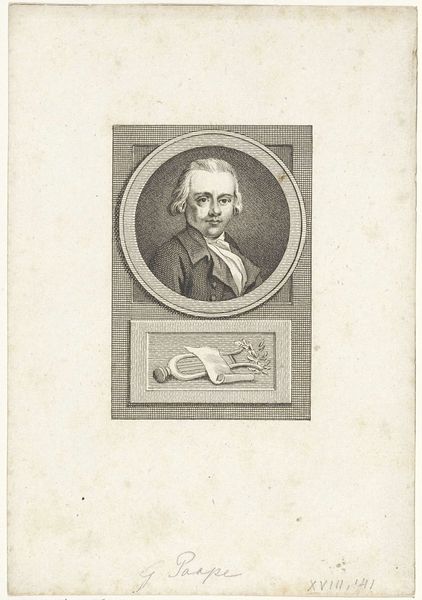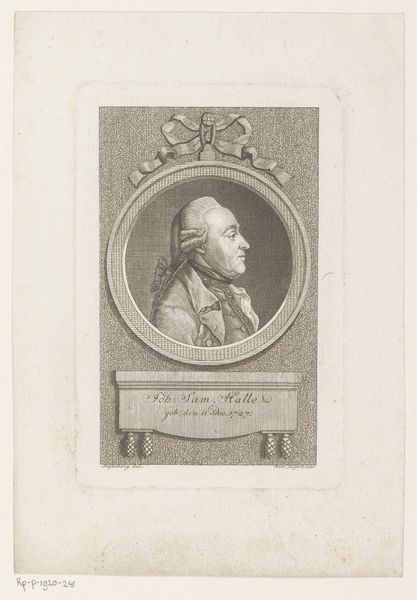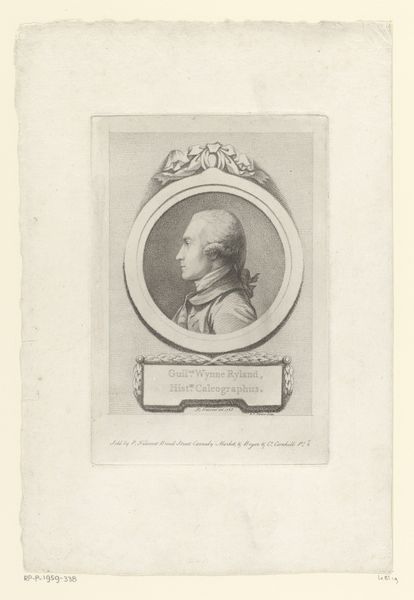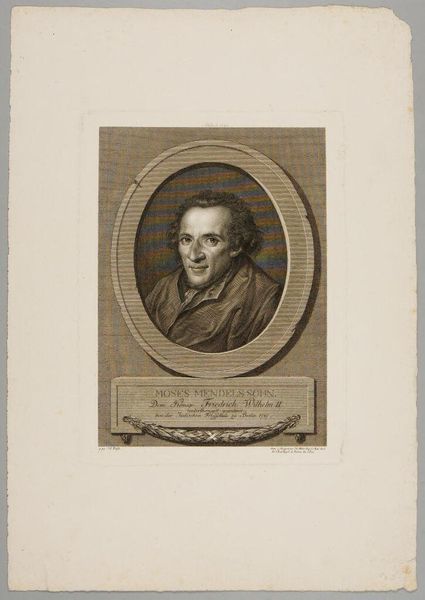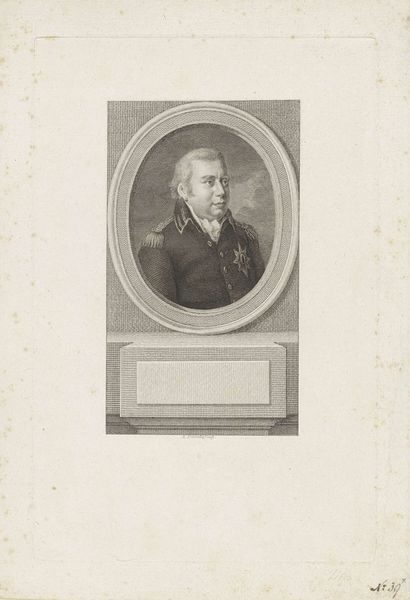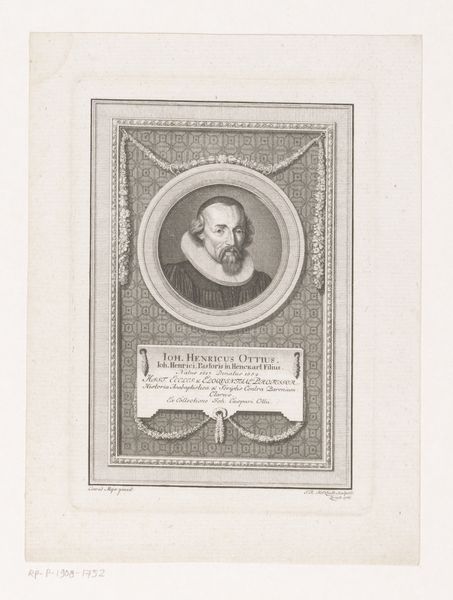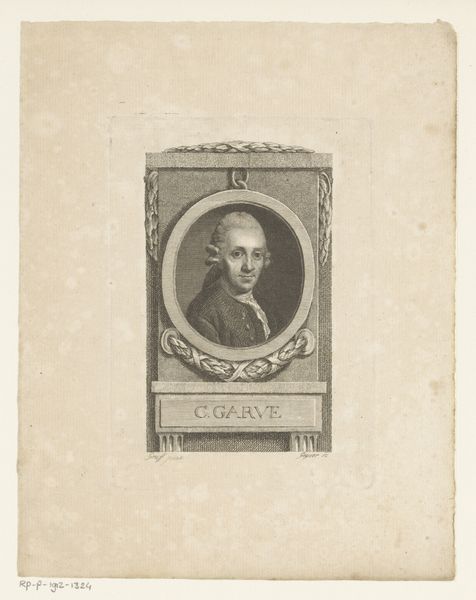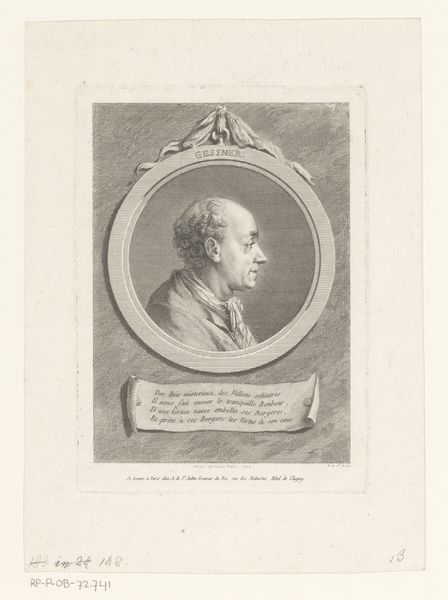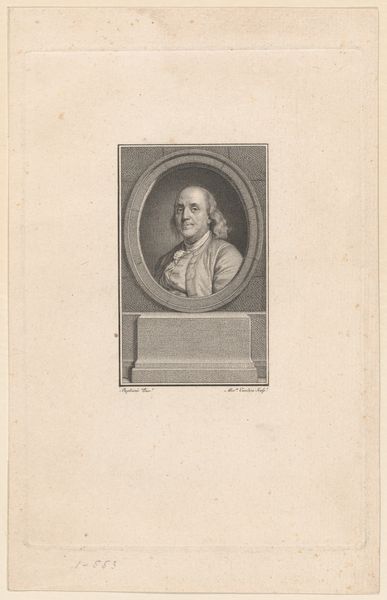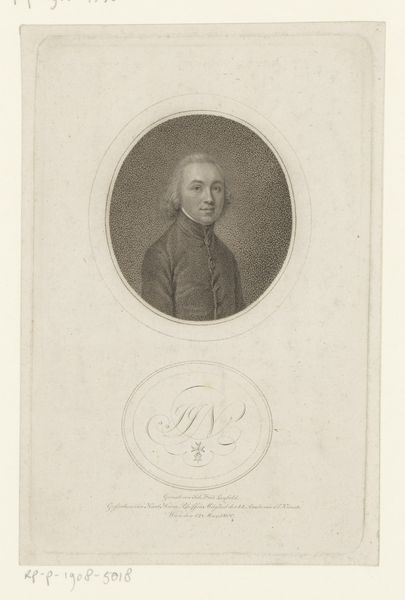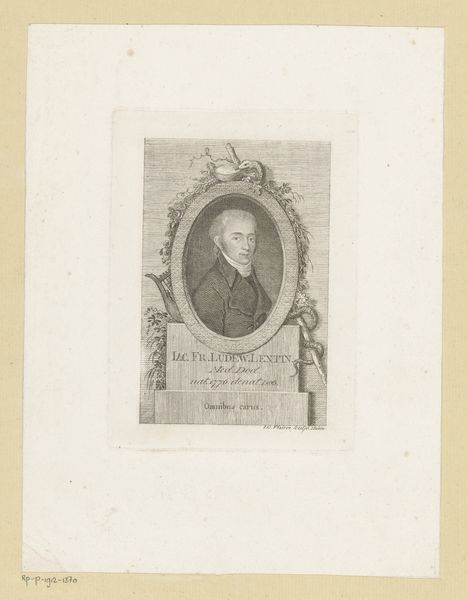
Dimensions: width 132 mm, width 96 mm
Copyright: Rijks Museum: Open Domain
Curator: This rather striking print, residing here at the Rijksmuseum, is entitled "Portret van Lucas van Steveninck." It dates from sometime between 1783 and 1795 and is the work of Reinier Vinkeles. Editor: My initial impression is of austerity, even formality, though the monochrome palette, that reddish-brown ink, lends a curious warmth. It's an engraving, so relatively small scale, yet that intense gaze is quite captivating. Curator: Indeed, engravings such as these played a vital role in circulating images and ideals during that era. Consider its symbolic framework: above, we see the gentleman, framed in a classical oval. Beneath him, within a rectangular panel, lie what appear to be dueling swords, somewhat askew. Editor: Ah, that’s fascinating. Is the placement a commentary on his character, perhaps representing a life balancing intellect with action, civic duty with personal...shall we say... inclinations toward conflict? Or perhaps his actual involvement with physical defense and power? Curator: Possibly, although this can easily be allegorical for the period that defined individual's need to uphold an ideal while constantly warring. In that period of Neoclassicism, even a portrait could be steeped in layers of moral messaging through symbolic elements. Swords represented the noble class who had to defend the nation as war heroes. It wasn't simply about the personality but his cultural role, rendered symbolically for posterity. Editor: So it functions almost as a heraldic emblem, subtly declaring status and perhaps aspirations within the intricate social and political web of the time? It definitely emphasizes how imagery of individuals have been deliberately controlled and framed, according to whatever message society intends to pass. Curator: Precisely. And understanding those visual cues allows us to decipher the messages that creators of the time embedded into their work. It connects the emotional impact of the artwork directly to social roles. Editor: It really underlines the powerful role these images had in shaping public perceptions, as if defining identity for others, but that also gives rise to all kind of conflict, or perhaps simply self-expression. In essence, images preserve the echoes of a time when outward appearances mattered perhaps more than we can imagine.
Comments
No comments
Be the first to comment and join the conversation on the ultimate creative platform.
